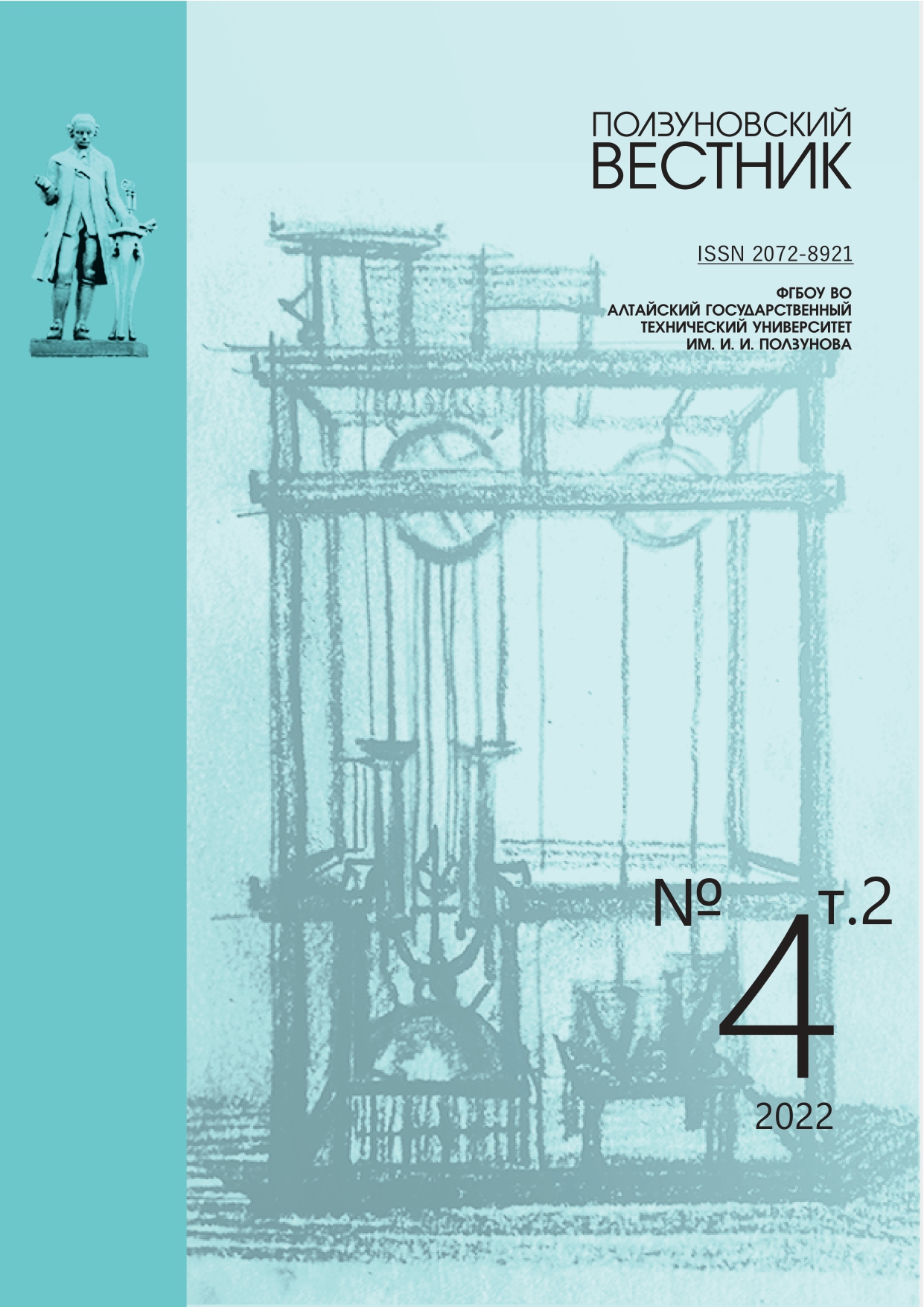DEVELOPMENT OF THE HEAVY MASTER-ALLOY FOR COMPACTED GRAPHITE IRON
EDN: SBFXGF
DOI:
https://doi.org/10.25712/ASTU.2072-8921.2022.4.2.012Keywords:
cast iron, structure, properties, modification to vermicular graphite.Abstract
This paper covers the results of development, study of structure and experimental trials with regard to heavy cast iron modifier to obtain compacted graphite shape.
The new modifier is based on iron-nickel-silicon alloy having in its content the conventional modifying elements such as magnesium and rare-earth metals (REM).
To produce modifier the melt is modified by means of surfactant metals. This is used to improve fluidity of the melt as well as to refine the grain structure and increase homogeneity of the modifier structure. The modifier is poured out into cast iron moulds with a section thickness of 5 to 20 mm by centrifugal way, thus providing purity and homogeneity of the modifier structure and properties.
The density of the new master-alloy is 7.0 g/cm3 which is more than 10% higher than that of the iron melt. Magnesium and REM in the modifier are bonded to nickel and silicon in a stable manner. Such densities and strengths of magnesium compounds make it possible to enlarge the technological window of modifying operations and to ensure increased reproducibility of structure and properties of critical cast iron parts.
Processing with the new modifier of cast iron in 100 kg ladles with acid lining without its coating at the consumption of the modifier 0,38-0,47% and the initial sulphur content in the iron melt in the range 0,015-0,017% allowed to obtain in the castings structure not less than 80% compact graphite (the rest is spheroidal graphite), in this case with 20% perlite content the strength of iron was in the range 345-385 MPa with relative elongation of 3,5%.
References
Шерман, А.Д. Чугун:справочник. –Москва: Металлургия, 1991. – 316 с.
Панов, А.Г., Давыдов, С.В. Исследование изменения микроструктуры литых Fe‒Mg‒Niлигатур в зависимости от технологии их модифицирования и скорости охлаждения. –М.: Металлургия машиностроения. 2022. – № 1. – С. 2–8.
Закиров, Э.С., Панов, А.Г. Исследование зависимостей различных концентраций элементов на активность магния в лигатуре системы Fe‒Mg‒Ni‒Si // Прогрессивные литейные технологии: Труды X МНПК НИТУ МИСиС 8–11 ноября 2022 г. / Под ред. проф. В.Д. Белова. – М. : Лаборатория рекламы и печати, 2022. – С. 237–240.
Панов, А.Г., Закиров, Э.С. Влияние микро-структуры сфероидизирующих модификаторов ФСМг5 на их потребительские свойства // Труды IX Междунанодной научно-практической конференции «Литейное производство сегодня и завтра». – Санкт-Петербург, 2012. – С.201–206.
Исследование структурообразования расплавов чугунов. Влияние наследственности на свойства отливок из ЧВГ / А.Г. Панов [и др.] // Литейщик России. – 2010. – № 4. – С. 17–20.
ГОСТ 7293-85 «Чугун с шаровидным. графи-том для отливок». Дата введения 01.01.1987. Официальный сайт: Профессиональные справочные системы «Техэксперт/Кодекс». (дата обращения 10.09.2022).
ГОСТ3443-87. «Отливки из чугуна с различной формой графита». Дата введения 01.07.88. Официальный сайт: Профессиональные справочные системы «Техэксперт/Кодекс». (Дата обращения 10.09.2022).
ГОСТ 9012-59 «Металлы. Метод определения твердости по Бринеллю». Дата введения 01.01.60. Официальный сайт: Профессиональные справочные системы «Техэксперт/Кодекс». (Дата обращения 10.09.2022).
ГОСТ 27611-88 «Чугун. Метод фотоэлектрического спектрального анализа».Дата введения 01.01.1989.Официальный сайт: Профессиональные справочные системы «Техэксперт/Кодекс». (Дата об-ращения 10.09.2022).
Downloads
Published
How to Cite
Issue
Section
License
Copyright (c) 2022 Ernest S. Zakirov, Alexey G. Panov

This work is licensed under a Creative Commons Attribution 4.0 International License.















 .
. This work is licensed under a
This work is licensed under a 
